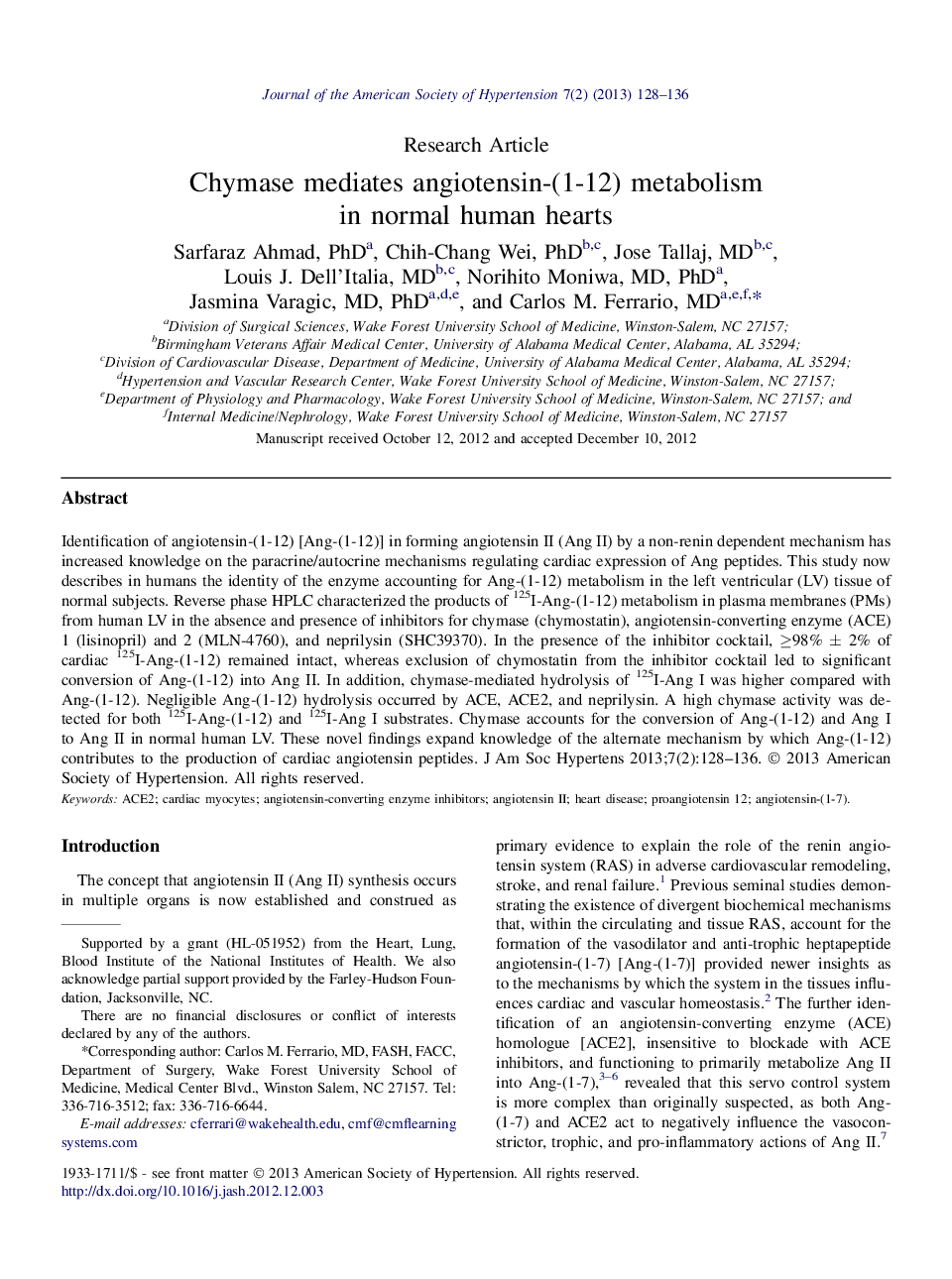| Article ID | Journal | Published Year | Pages | File Type |
|---|---|---|---|---|
| 2957143 | Journal of the American Society of Hypertension | 2013 | 9 Pages |
Identification of angiotensin-(1-12) [Ang-(1-12)] in forming angiotensin II (Ang II) by a non-renin dependent mechanism has increased knowledge on the paracrine/autocrine mechanisms regulating cardiac expression of Ang peptides. This study now describes in humans the identity of the enzyme accounting for Ang-(1-12) metabolism in the left ventricular (LV) tissue of normal subjects. Reverse phase HPLC characterized the products of 125I-Ang-(1-12) metabolism in plasma membranes (PMs) from human LV in the absence and presence of inhibitors for chymase (chymostatin), angiotensin-converting enzyme (ACE) 1 (lisinopril) and 2 (MLN-4760), and neprilysin (SHC39370). In the presence of the inhibitor cocktail, ≥98% ± 2% of cardiac 125I-Ang-(1-12) remained intact, whereas exclusion of chymostatin from the inhibitor cocktail led to significant conversion of Ang-(1-12) into Ang II. In addition, chymase-mediated hydrolysis of 125I-Ang I was higher compared with Ang-(1-12). Negligible Ang-(1-12) hydrolysis occurred by ACE, ACE2, and neprilysin. A high chymase activity was detected for both 125I-Ang-(1-12) and 125I-Ang I substrates. Chymase accounts for the conversion of Ang-(1-12) and Ang I to Ang II in normal human LV. These novel findings expand knowledge of the alternate mechanism by which Ang-(1-12) contributes to the production of cardiac angiotensin peptides.
